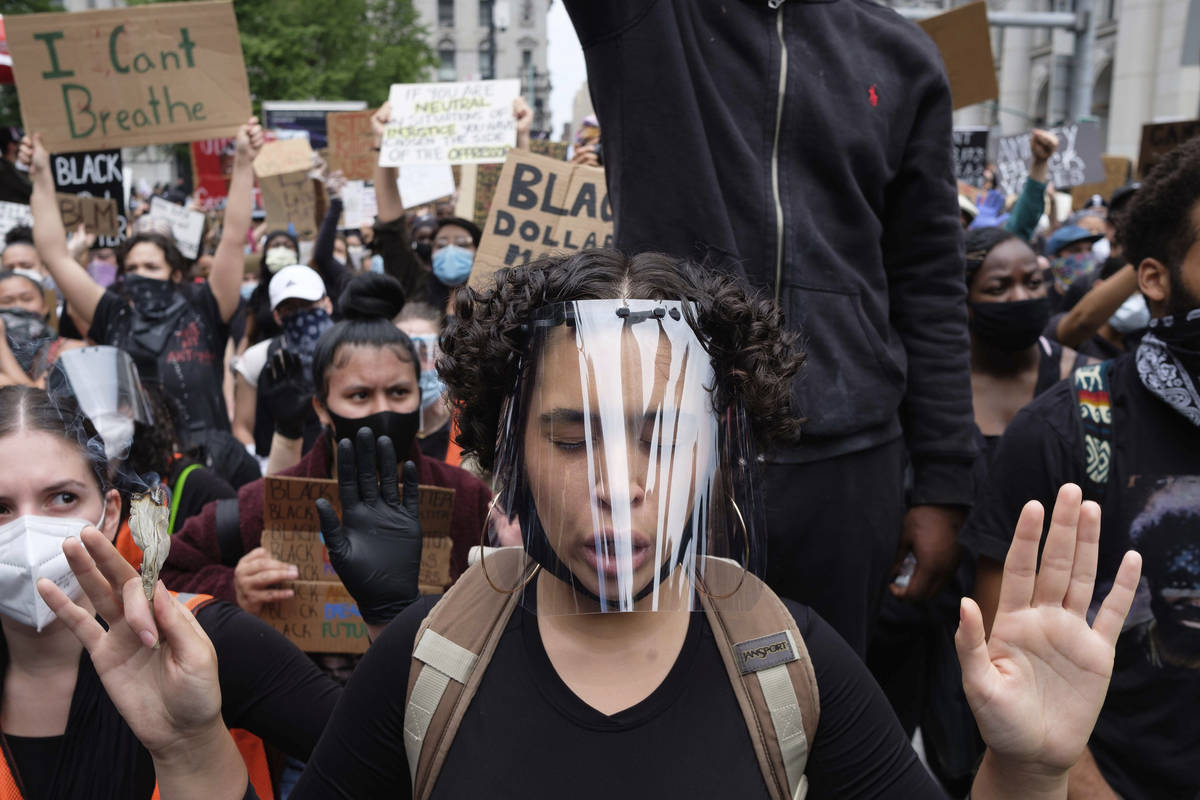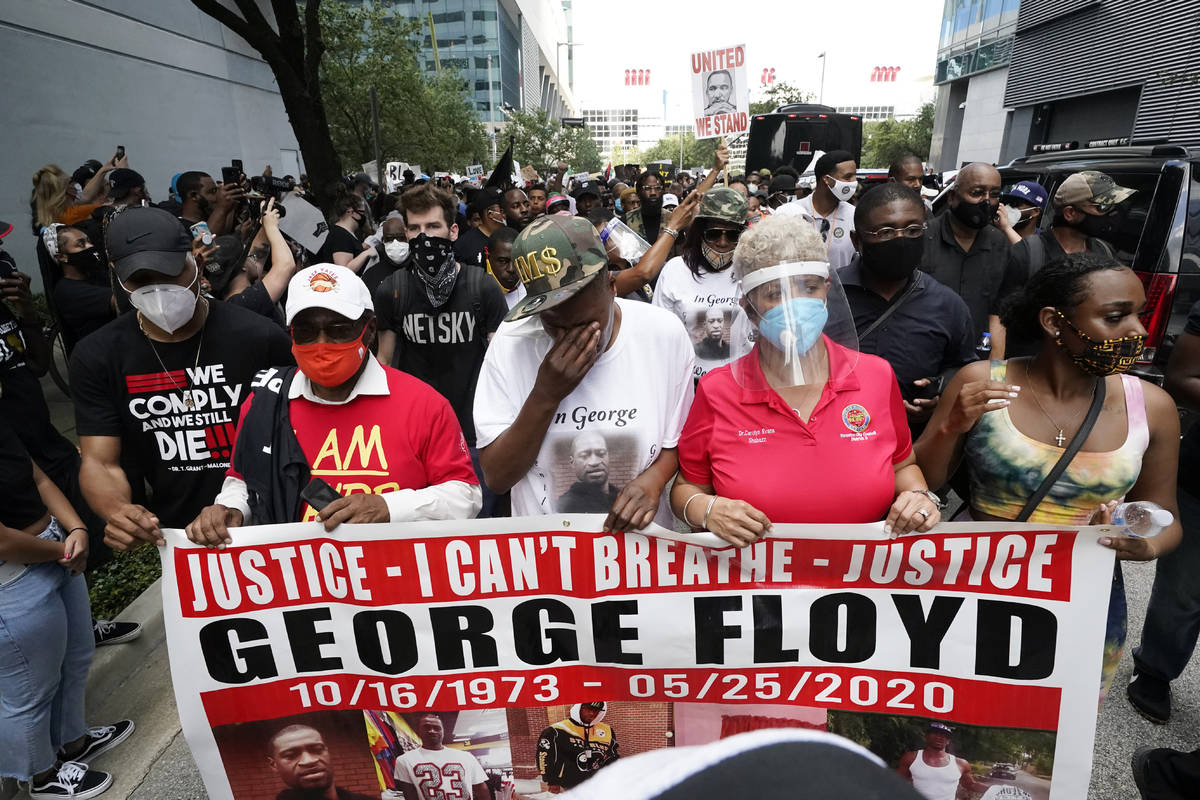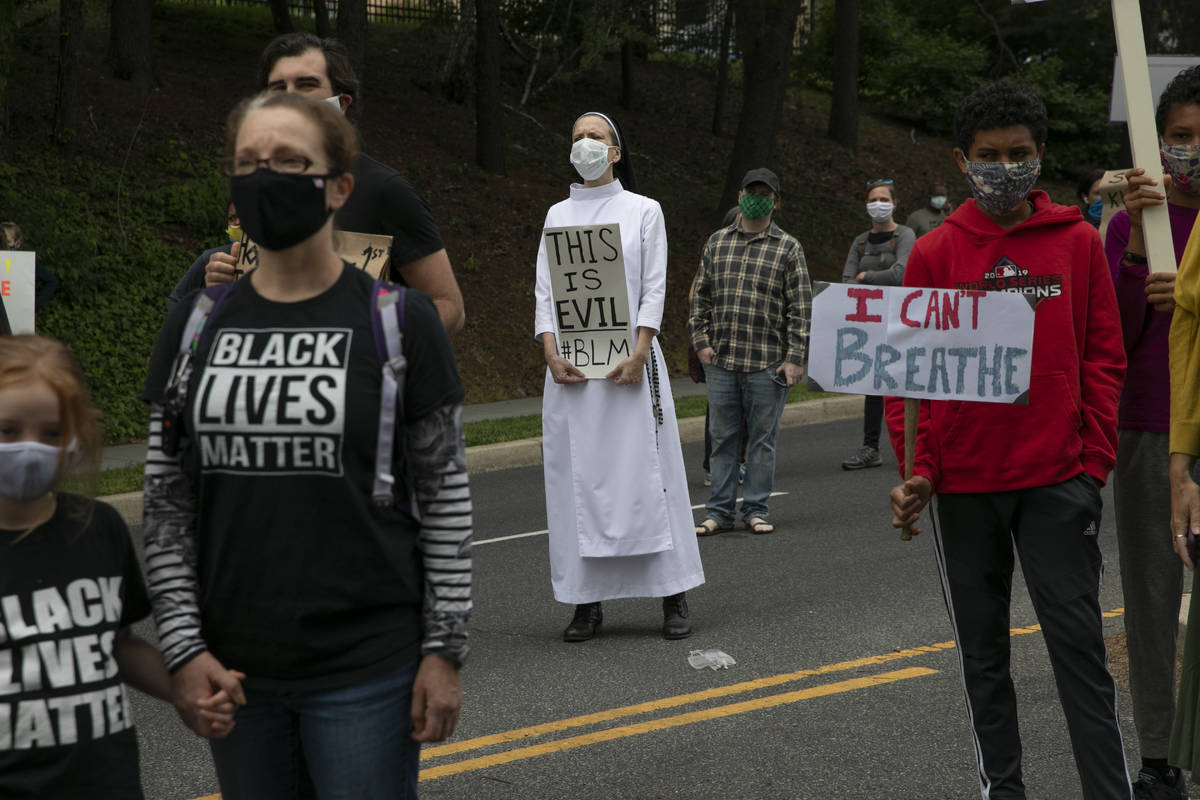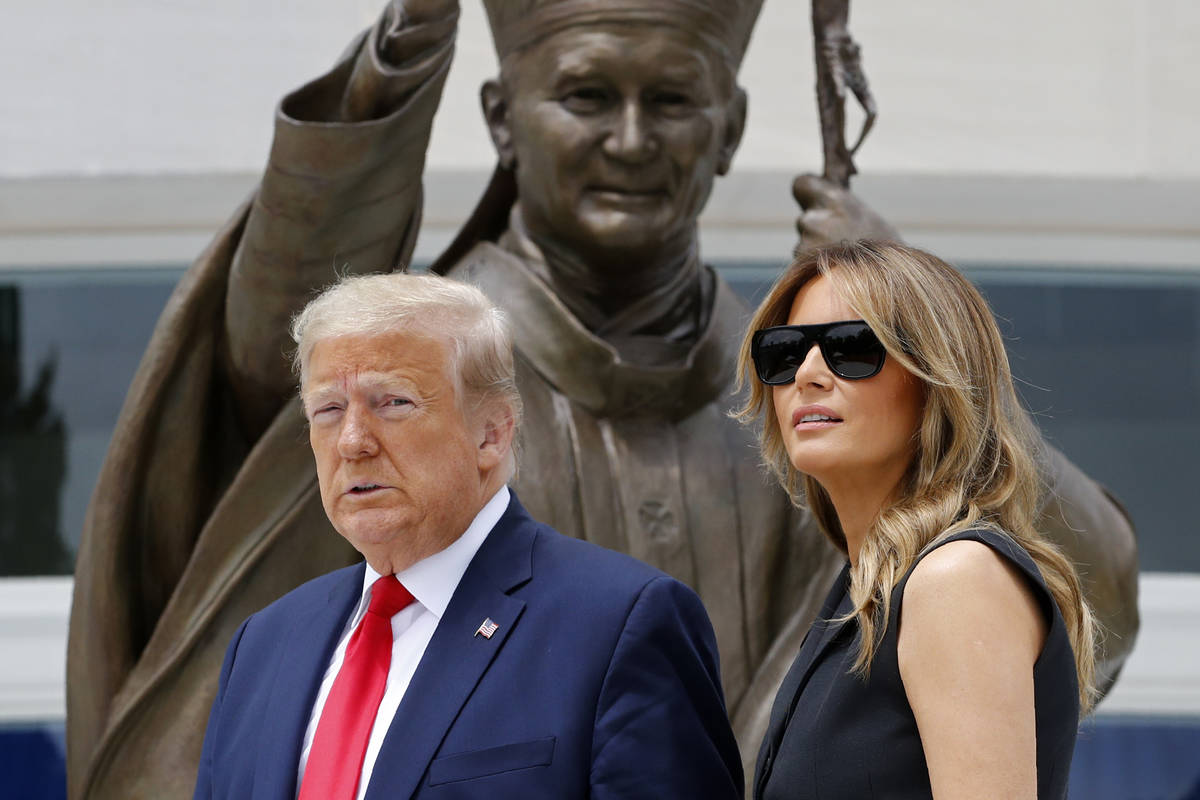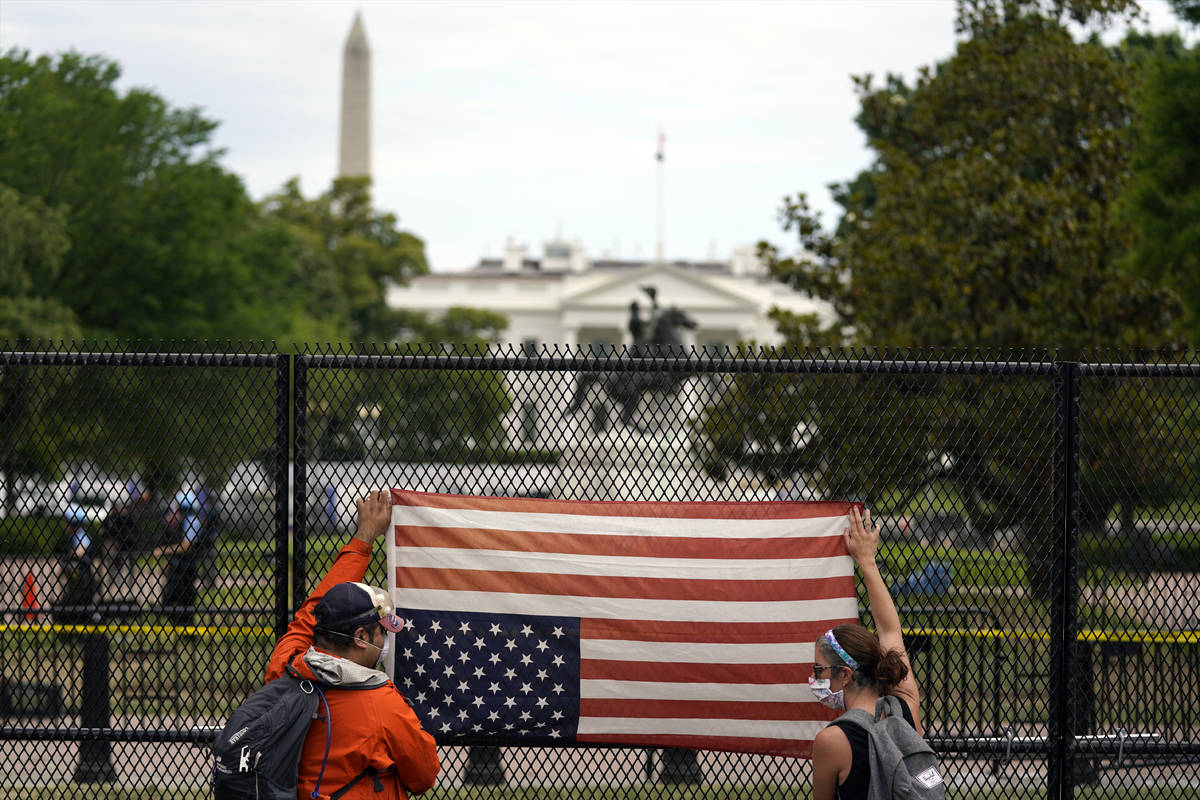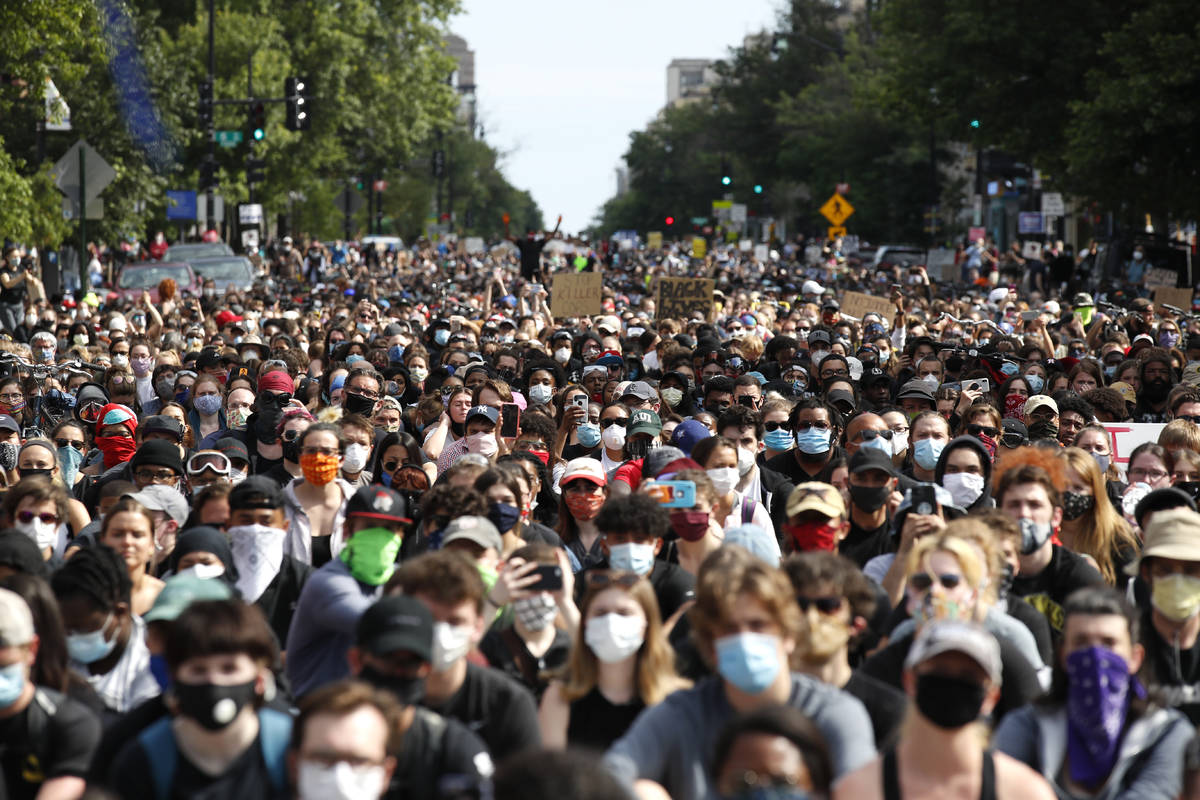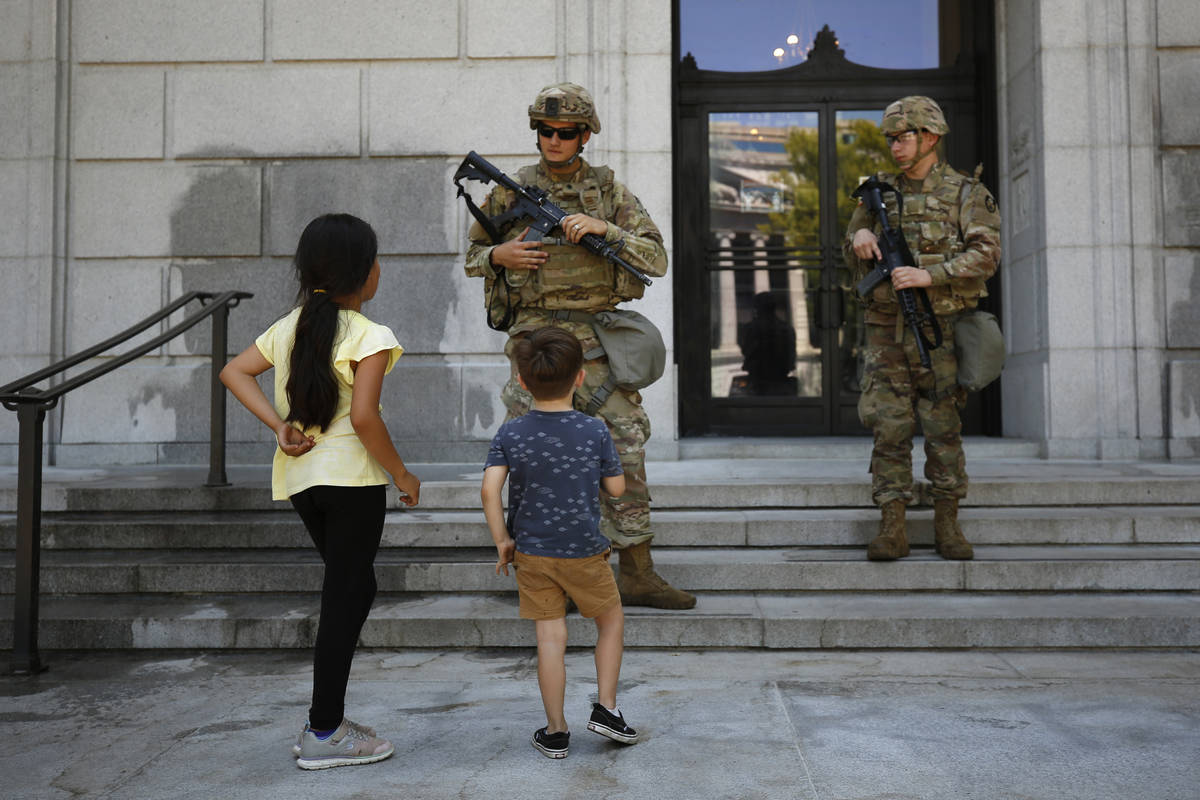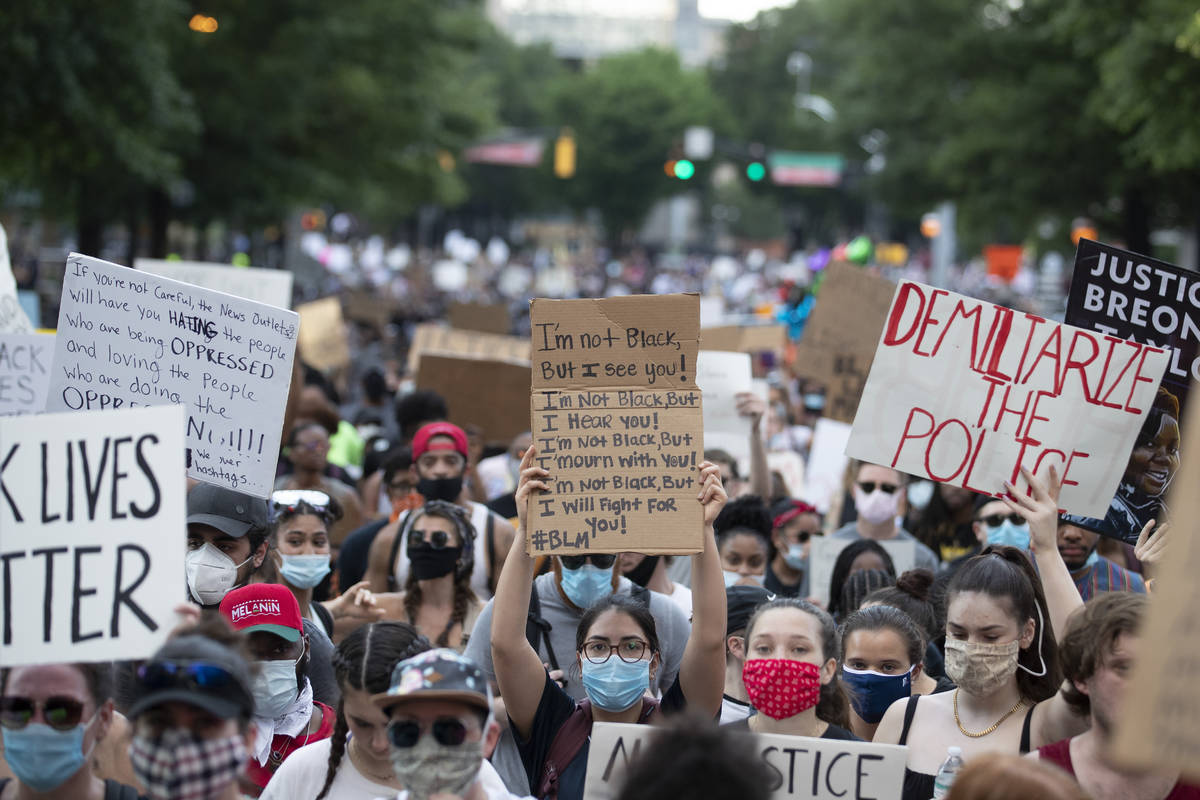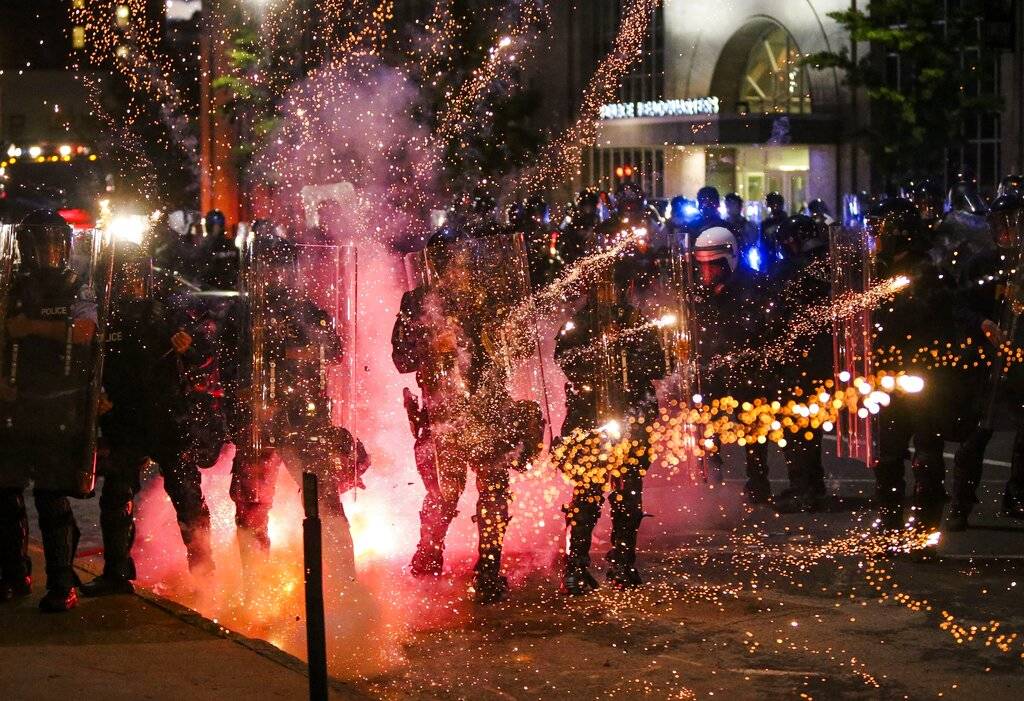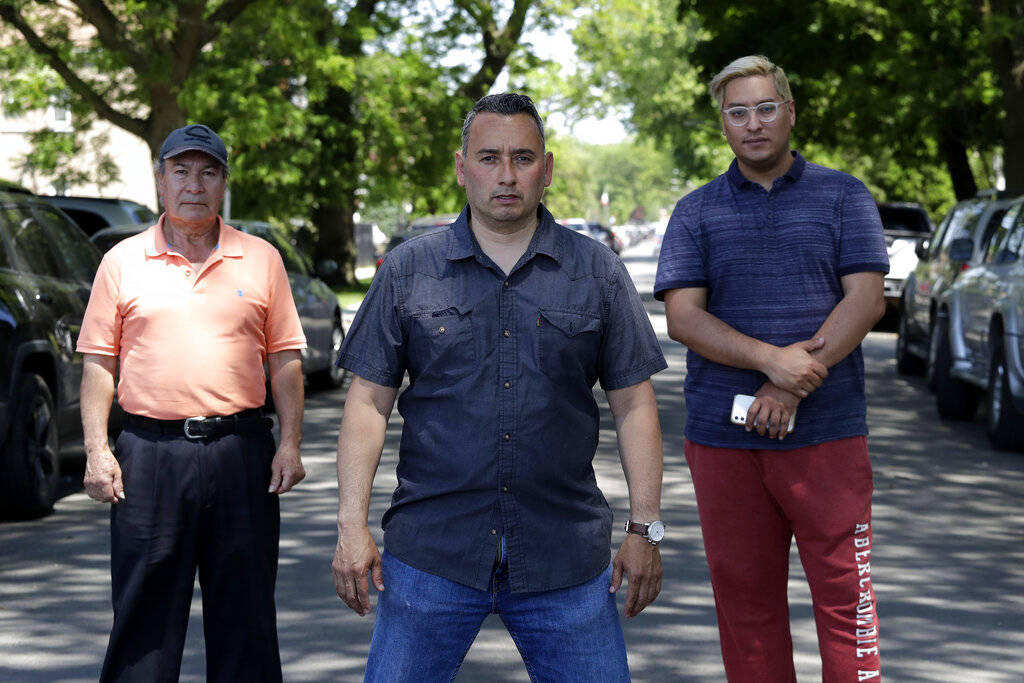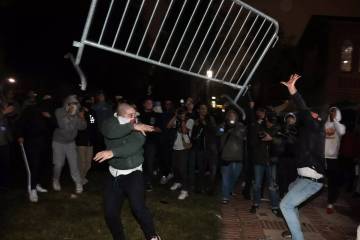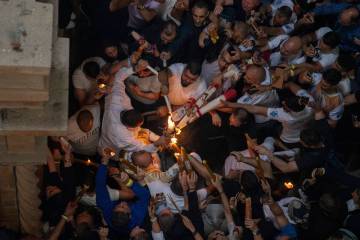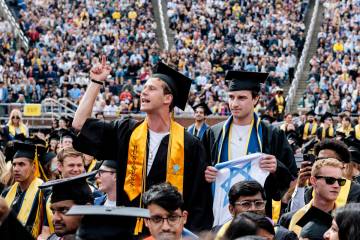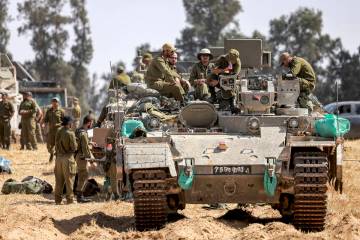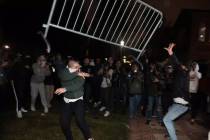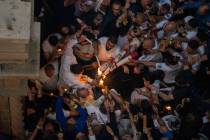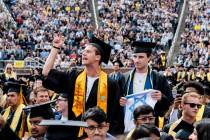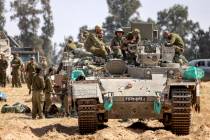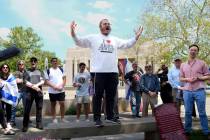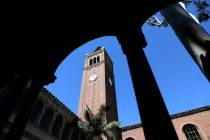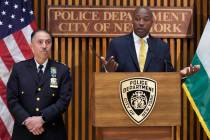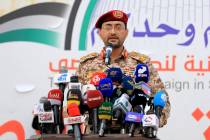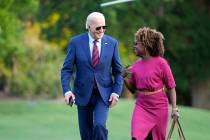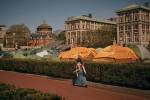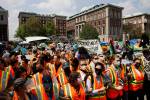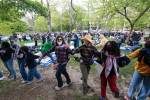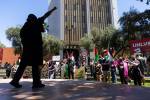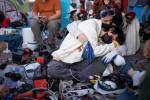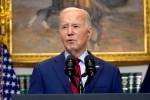‘Not stopping’: Defiant NYC protesters march through curfew
NEW YORK — An 8 p.m. curfew didn’t stop thousands of defiant demonstrators from marching through the streets of New York City throughout the night Tuesday, though some of the rampant destruction seen over the past few nights was quelled.
The citywide curfew, which is in place through Sunday and was moved earlier from the previous night, was instated to prevent the widespread damage and destruction that has filled the city’s streets over the last two nights after largely peaceful dayside protests.
Mayor Bill de Blasio doubled down on a citywide curfew, but rejected urging from President Donald Trump and an offer from Gov. Andrew Cuomo to bring in the National Guard.
“Everyone, time to go home so we can keep people safe,” he said on WINS-AM radio shortly after the curfew took effect.
But demonstrators continued winding through the streets, mostly in Manhattan and Brooklyn, as part of ongoing nationwide protests following the May 25 death of George Floyd and other recent racially charged killings.
“I’m surprised,” said Risha Munoz, on Manhattan’s Upper West Side, where at points they were greeted with cheers and horns by onlookers in building windows. “I didn’t think they were gonna let us go on, but we just kept on moving and we’re not stopping.
“Something has to break, and it’s not going to be us,” said Evan Kutcher, one of hundreds of demonstrators who stood outside the Barclays Center chanting Floyd’s name Tuesday evening.
Police began making arrests around 9 p.m. and shut down parts of the West Side Highway in lower Manhattan, blocking it off to huge crowds of protesters. The police department announced it would not allow vehicle traffic south of 96th Street in Manhattan after curfew, though residents, essential workers, buses and truck deliveries were exempt.
“We’re going to have a tough few days. We’re going to beat it back,” de Blasio, a Democrat, said in announcing that the 8 p.m. to 5 a.m. curfew would remain through Sunday.
Jane Rossi said she witnessed officers rip a man out of his car and arrest him in Chelsea around 10:45 p.m.
The car was behind a group of several hundred protesters that had roamed Manhattan peacefully since leaving Trump Tower at 8 p.m. Tensions had risen moments earlier when some in the group began trying to damage a bike rental station and banged on the windows of a JCPenney’s. The vast majority of the crowd moved to stop the them.
Officers surrounded the car and arrested the driver moments later.
“They were just driving behind the protesters making sure that we were safe,” Rossi said. “They were part of the protest.”
Just after midnight Wednesday, most of the city’s streets were cleared aside from police patrolling, especially in hot-spot areas for demonstrations in areas of Brooklyn and Manhattan. There was a heavy police presence in the Brooklyn neighborhood of Crown Heights, where authorities say police fatally shot a man after responding to reports of shots fired. NYPD Chief of Department Terence Monahan said the officer-involved shooting was not connected to the protests.
Protests continued in New York City and across the country Tuesday following the death of Floyd, a black man who died on May 25 after a white Minneapolis police officer pressed a knee on Floyd’s neck even after he stopped moving and pleading for air.
While de Blasio insisted the city would put a stop to the violence and vandalism that have marred largely peaceful mass demonstrations surrounding Floyd’s death, both the Republican president and the Democratic governor laid into the city’s handling of the mayhem thus far.
“The NYPD and the mayor did not do their job last night,” Cuomo said at a briefing in Albany. “Look at the videos. It was a disgrace.”
California
SACRAMENTO, Calif. — More than 2,400 California National Guard soldiers toting military assault rifles are on the streets and authorities say that has allowed police officers to crack down on the rampant vandalism and thievery that scarred the first several days of demonstrations.
While the vast majority of protesters are peaceful, there have been violent clashes with police in Los Angeles, Sacramento, the San Francisco Bay Area and other cities.
Following a weekend that saw hundreds of businesses damaged, Sacramento received 500 Guard members on Monday, instituted a curfew and had a much calmer night.
“The National Guard are not playing a proactive law enforcement role,” said Officer Karl Chan, a spokesman for Sacramento police. “They are guarding, and we’re using them to guard critical infrastructure to free up our officers to respond to incidents of a critical nature — vandalism, looting, things like that.”
It was much the same in Los Angeles, where soldiers have been deployed since early Sunday after the city’s 10,000 officers found themselves unable to stop vandals and thieves from targeting officers and ravaging businesses. Police vehicles were burned and windows on businesses smashed and the goods inside pillaged.
Los Angeles Police Chief Michel Moore on Monday described his officers as fighting a largely defensive action until the Guard arrived. Officers at times were pelted with rocks and other objects and the focus became dispersing the crowd rather than going after the perpetrators and allowing the vast majority of demonstrators who were peaceful to continue marching.
Police were largely, and often futilely, attempting to protect businesses, he said, until they staged hundreds of soldiers for that duty. That, for instance, allowed officers to stop a Foot Locker from being robbed a second time, Moore said.
“We captured and arrested those people. In the absence of the National Guard, we would not have been able to be there,” he said.
Georgia
ATLANTA — Georgia’s governor warned Tuesday that he would “do whatever is necessary” to prevent more violence following protests over the death of George Floyd in Minnesota, but he ruled out calling up more National Guard troops or law enforcement officials for now.
Gov. Brian Kemp said he understood why people were upset, citing the coronavirus pandemic and “sky high” unemployment in addition to Floyd’s death. But he condemned the widespread vandalism and looting that broke out in Atlanta after a peaceful demonstration on Friday.
Kemp has authorized up to 3,000 National Guard troops to be deployed to cities across the state, and sent state police to reinforce law enforcement in Atlanta. The city has been calmer since the weekend, with only sporadic violence.
Late Tuesday, hundreds of protesters lingered on the streets of downtown Atlanta ahead of another 9 p.m. curfew imposed by Mayor Keisha Lance Bottoms. Authorities used armored vehicles to form a cordon at the state Capitol nearby.
Bottoms has implemented an identical curfew every night starting Saturday. As the curfew took effect, police and National Guard troops moved in, firing tear gas. The crowd quickly dispersed, and television footage showed police leading some people away in zip ties.
“If those people that are unruly out there think that we will lay down and we will quit, you are in the wrong state,” Kemp said at a news conference earlier in the day.
Nearly 400 people have been arrested in Atlanta during protests over the previous four days, according to numbers released by police. Demonstrations have also been held in other Georgia cities, including Savannah, Athens, Augusta, Macon and Columbus.
Oregon
PORTLAND, Ore. — Portland, Oregon, did not impose a curfew on Tuesday night for the first time in four days after several thousand demonstrators remained largely peaceful during a march the night before to protest the killing of George Floyd in Minneapolis.
Mayor Ted Wheeler thanked protesters and organizers who kept an hours-long march and gathering peaceful and said he saw “a community ready for healing and reconciliation.”
The protest marked a turning point for Oregon’s largest city after demonstrations the previous three nights spun into violence. Crowds set fires, shattered windows and broke into police headquarters and a corrections center during demonstrations over the killing of Floyd, a handcuffed black man who pleaded for air as a white Minneapolis police officer pressed a knee against his neck.
“I know that if we truly want justice for George Floyd, we have a long way to go. I know that, but last night I saw a community that’s ready for both healing and reconciliation. I saw a progressive and mindful police bureau that deeply cares to to that work,” Wheeler said.
Minneapolis
MINNEAPOLIS — The two men stepped from the shadows as the car turned off an upscale shopping street into a residential area located on the far edge of the rioting that swept through Minneapolis. It was after midnight. A pair of metal dividers blocked the road, and the men stepped to either side of the car as it stopped. Both carried assault rifles.
“Do you live here?” one of the men asked, politely, but forcefully. His hands rested casually on the rifle slung across his chest, and a pistol was strapped to his belt.
“We have lots of old people here,” he continued, satisfied that the driver, an AP reporter, posed no danger. “We don’t want anyone to get hurt.”
A week of civil unrest has led some Minneapolis residents near the epicenter of the violence to take steps to protect their homes and neighborhoods. They’ve stocked up on fire extinguishers and buckets, and formed scores of loose neighborhood watch groups — aided by a cluster of apps and social media — to share what they view as suspicious activity.
Preparing for nightfall in Minneapolis has meant a new routine for many: stashing garbage cans to keep them from being tossed or set on fire, turning on lights and opening blinds. In some neighborhoods near large demonstrations, witnesses say it also includes residents armed with baseball bats, crowbars and the occasional pistol barricading their streets to keep violent protesters away.
Similar scenes have started to emerge across the country as the angry protests have spread, along with a heightened sense of fear and diminished confidence that police will keep the peace. In Chicago’s heavily-Mexican Little Village enclave, neighborhood residents stood watch as shops were vandalized along a busy commercial strip.
For some, it’s all a sign of community pride and rational response when policing has broken down, as it did in most destructive nights in Minneapolis last week. But others see a more troubling undercurrent in the anxiety and mobilization, particularly as it spreads to largely white neighborhoods that have seen little or no damage.
“There’s a sense of state failure and into state failure comes private actions to protect one’s family and one’s community,” said Omar Wasow, an assistant professor of politics at Princeton University who writes about race and the politics of protest movements. “You take that and you layer it on the long, deep-rooted racist mythology that says, ‘I should be scared and black people are a threat,’ and you get a kind of circle-the-wagons behavior.”’



